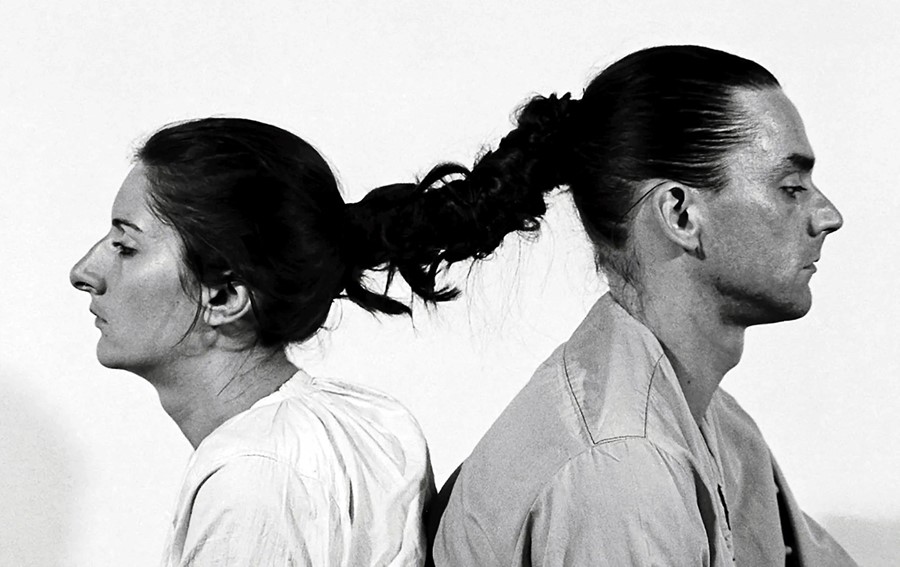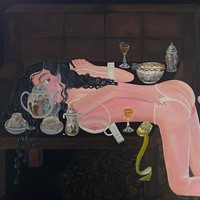The artist who once stole Hitler's favourite painting from a Berlin art gallery and collaborated on some of Marina Abramović's most famous performances
The renowned artist Ulay (born Frank Uwe Laysiepen) died on Monday at the age of 76 in Ljubljana, Slovenia (home of the Ulay Foundation). After initially being diagnosed with lymphatic cancer in 2011, he documented his battle with the illness in the 2013 film Project Cancer: Ulay's journal from November to November. Despite recovering in 2014, his passing is reported as a result of complications caused by the treatment.
Ulay is generally remembered in conjunction with his former lover and collaborator, Marina Abramović. Their 12-year relationship, which spanned the late 70s and 80s, was turbulent and fraught, but it was one of the most fertile and celebrated artistic partnerships of the 20th century. Together, they broke new ground with their pioneering performance art (though Ulay always preferred the German word “aktion”), propelling each other into new, evermore extreme and unexplored realms of emotional discomfort and physical endurance; testing the capabilities of the body and the spirit. “It is with great sadness I learned about my friend and former partner Ulay’s death today,” Abramović commented on Instagram. “He was an exceptional artist and human being, who will be deeply missed. On this day, it is comforting to know that his art and legacy will live on forever.”
But, beyond his productive partnership with Abramović, Ulay was, in his own right, a prolific and incredibly important artist – a pioneer and a provocateur, with a lifelong curiosity, who tested the limits of what the mediums of performance art and photography could conceivably contain. In honour of his memory, we look at some significant moments from his life and work.
HE STOLE HITLER’S FAVOURITE PAINTING FROM A GALLERY TO ADORN THE LIVING ROOM WALL OF AN IMMIGRANT FAMILY
Ulay began his career as a photographer – in the 1960s he was one of the official representatives of Polaroid. But he first left his indelible imprint on the art world with his solo public “aktion” in 1976, when he walked into the Neue Nationalgalerie in Berlin, took Carl Spitzweg’s “The Poor Poet” (1837) down from the wall and, ineffectively concealing it beneath his jacket, walked out of the gallery. He drove the artwork, renowned as Hitler’s favourite painting, to the home of an impoverished immigrant Turkish family living in a ghettoised district of the city, where he hung it on their living room wall. “Everyone should have art in their homes,” he recalled, relating this story to Dazed last year.
After documenting the family’s happy reaction to the new artwork adorning their home, Ulay eventually handed himself in and alerted the authorities to the painting’s whereabouts, and the frenzied search for the lost Spitzweg was called off.
Born in 1943, Ulay’s life began in the final throes of World War II. His father, who fought in and survived both world wars, never spoke of either conflict, the subject was taboo in his West Berlin home. And so the young Ulay was raised with an acute sense of a dark, unmentionable past and an undercurrent of unresolved trauma. His aktion with the Spitzberg painting, which he named “Irritation – There is a Criminal Touch to Art”, speaks of a nation still living with survivor guilt and still trying to exorcise the trauma of Hitler’s atrocities; it’s an irreverent and playful reappropriation of cultural artefacts and national institutional treasures; as described by The Guardian, it’s an act of “art theft as artwork.”
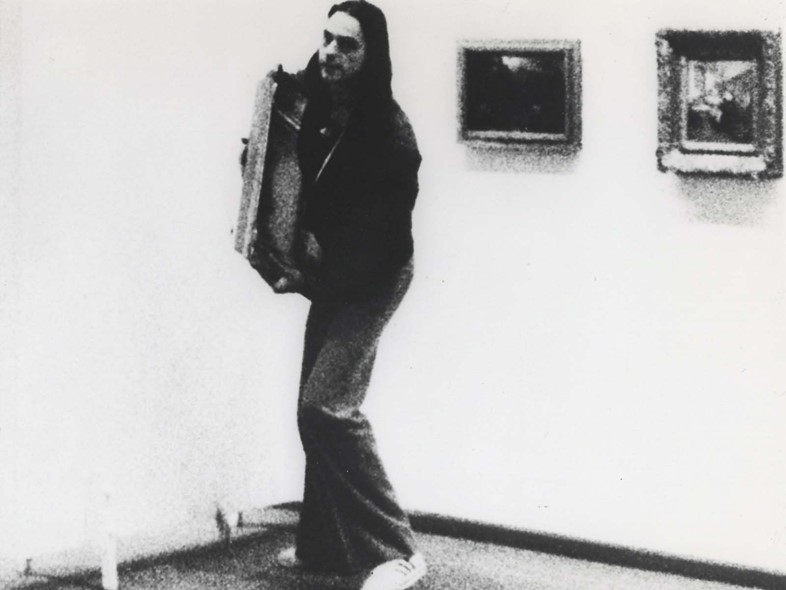
HE CREATED AN ALTER-EGO WITH A HYBRID GENDER
In the early-mid 1970s, Ulay’s self-interrogation led him to produce a series of self-portraits exploring gender. The Polaroids depict the artist as both man and woman, representing the masculine and feminine elements of his character.
This is a concept described by eminent Swiss psychoanalyst Carl Jung, who wrote about the unconscious female component of the male psyche (which he named the “anima”) and the masculine portion of the female self (the “animus”). His iconic photograph “S’he” (1973) shows Ulay’s face divided into two perfect halves as both male and female; animus and anima. This hybrid-gendered alter-ego, which he named Renais Sense, features in some of his most reproduced artworks from this period, including “WT” (1974), and “Sex-Stretcher” (1974).
This series of work featuring Renais Sense represents Ulay’s desire to externalise the internal, and his interest in identity, as well as predicting his future practice of using his own body as a site of exploration and artistic expression, and his creation of phantom artistic identities.
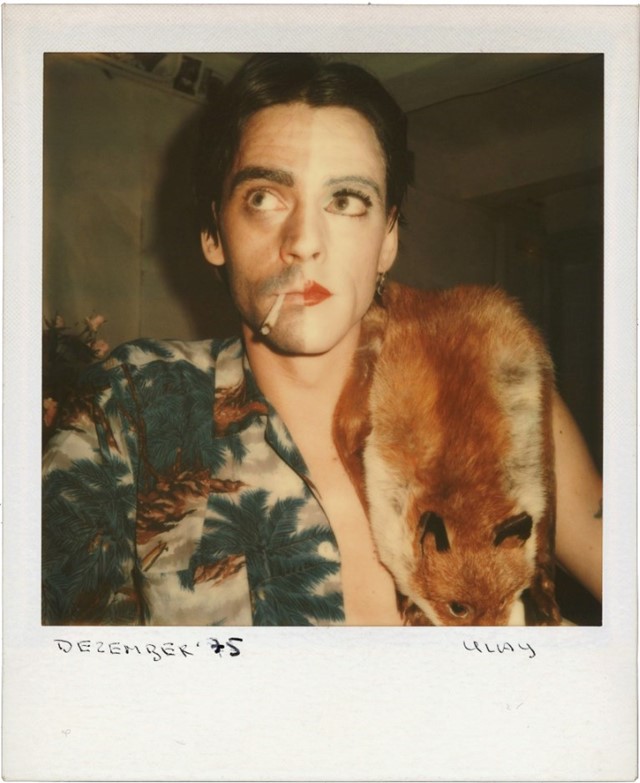
HE PLACED THE PUBLIC INTO AN UNCOMFORTABLE PROXIMITY WITH PRIVATE MOMENTS
In what could reasonably be regarded as one of the most auspicious meetings in the history of performance art, Ulay crossed paths with Abramović in Amsterdam in 1976. Within the year, the pair were not only living together but were dressing and behaving as twins, forming a collective being they called “The Other”.
When Ulay’s art practice intersected with that of Abramović’s, they mutually drove each other to the outer limits of endurance. Their work repeatedly asks us what it means to exist alone in our bodies, isolated as separate entities. Is it possible to achieve some sort of communion outside the physical limitations of the human body?
Their many confrontational collaborations repeatedly involve the audience directly, whether is be as participants, witnesses and accomplices. Their 1977 aktion Relation in Space saw the artists repeatedly running and colliding into one another for a whole hour, in an attempt to combine their male and female energy and create a third type of consciousness, “that self”. While Imponderabilia (first performed in 1977) involved Ulay and Abramović standing naked, facing each other in a doorway. As the artists stared at one another, viewers were invited to pass between them, thereby entering into the orbit of their intimacy and passing uncomfortably through the trajectory of their eye-contact. The doorway was modified by Ulay to be narrower than usual, which also meant that visitors were forced to brush against the artists as they walked between them, for maximum discomfort.
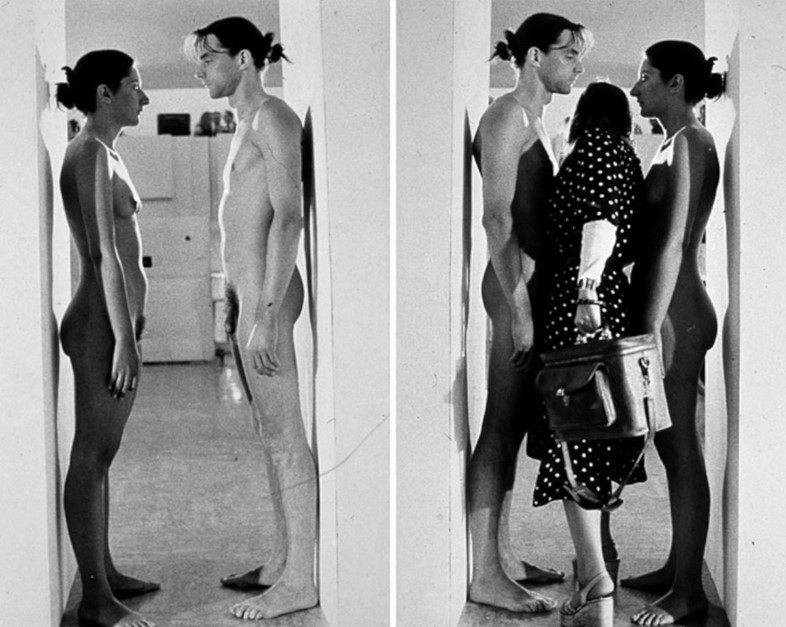
HE SAID FAREWELL TO HIS LOVER BY WALKING THE GREAT WALL OF CHINA
Ulay and Abramović famously terminated their turbulent romantic and artistic partnership in 1988. In an appropriately grand gesture, they marked the dissolution of their relationship with an artistic performance they named “The Lovers”. Standing 5,995 km apart on the ruins of the Great Wall of China, the world’s most famous art-couple began walking towards each other. When they eventually met in the middle, a gruelling 90 days later, at a Buddhist temple in the Shaanxi province, the pair embraced before going their separate ways.
It’s a performance which dramatises the end of love. "That walk became a complete personal drama,” Abramović described. “Ulay started from the Gobi Desert and I from the Yellow Sea. After each of us walked 2500 km, we met in the middle and said good-bye.” When they’d initially conceived “The Lovers”, they’d planned to meet in the middle of the Great Wall and marry, but their relationship had deteriorated to such an extent that they modified its conclusion.
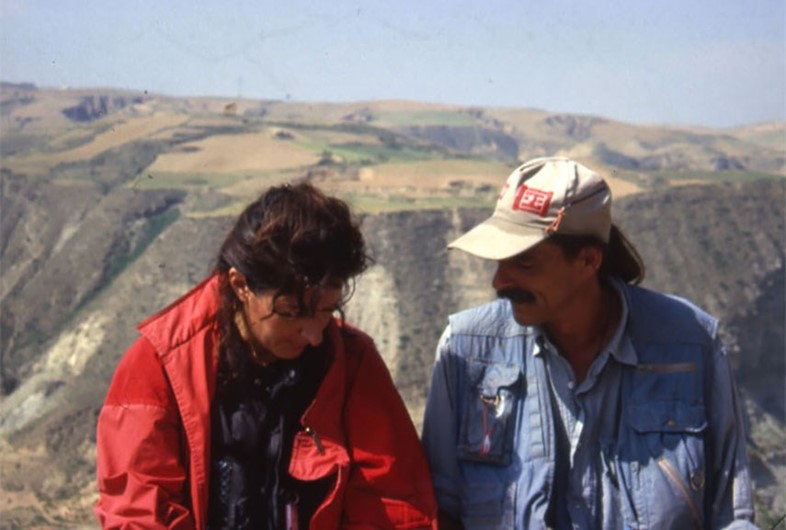
AFTER 20 YEARS OF DISCORD, HE REUNITED WITH MARINA ABRAMOVIĆ IN A PUBLIC PERFORMATIVE ART PIECE
Despite their incredibly conscious uncoupling, the pair’s relationship continued to be a source of discord. After their separation, Abramović’s career soared, while Ulay retreated. Artnet reported him saying, “For her, it was very difficult to go on alone. For me, it was actually unthinkable to go on alone. If love is broke it turns to hate,” he added. “She hated me.”
Between the months of March and May in 2010, Abramović staged The Artist is Present at MoMA, New York – a performance in which she sat silently at a table for 736.5 hours and people queued to take their turn sitting opposite and share eye-contact. After more than 20 years apart, Ulay made an appearance during the opening night of the performance. The reunion, which was captured on film (below), is a poignant watch, as both faces silently register decades’ worth of intensely complicated feelings.
As moving as this moment was, it wasn’t a resolution to their conflict. In 2014, Abramović interfered with the publication of a book Whispers: Ulay on Ulay, which was supposed to include some of their joint work. The publisher was forced to exclude 28 images, replacing them instead with a pink square to represent their absence. In his 2015 piece “Skeleton in the Closet”, Ulay responded by writing the page numbers containing these missing pictures on the wall as part of the performance. That same year he took Abramović to court, claiming she’d violated the contract they’d created regarding their shared work. He won and royalties and fair accreditation. “I was hurt, very much hurt,” he told The Guardian. “It is unthinkable, so unjust, so not right. When I was working with her, she was great. But then, you know, the direction she went to, to become a star, is something I do not envy. It’s far away from my intentions, wishes, desires ... it went to her head.”
But, in 2017, just two years after he sued her, Ulay confirmed they had finally reconciled their differences. “Everything naughty, nasty disagreements or whatever from the past, we dropped,” he told Artnet. “We became good friends again. That’s a beautiful story actually.”
HE TURNED HIS BATTLE WITH CANCER INTO A WORK OF ART
Ulay transformed everything into art. Despite admitting to Dazed, “I’m a body artist you see, so I don’t like getting sick,” Ulay succeeded in transfiguring the illness that eventually killed him into art.
In 2009 he moved to Ljubljana in Slovenia. Plans for a documentary with Damjan Kozole were already underway but, when he was diagnosed with lymphatic cancer, it didn’t derail their project. Project Cancer: Ulay’s journal from November to November reflects on Ulay’s past whilst also documenting his year of treatment – a year that could’ve been his last. Although he did recover, the film is imbued with the pathos and bleak comedy of a man confronting the end of his life.
HE WAS DRIVEN BY “THE MUST”
“One can learn many things in life,” he told The Guardian. “But not art. The madness you need – the must which is shaking you all the time. You are an artist even when you are asleep. Because of the must.” His lifelong “must” to make art was never diminished, he made art as though his life depended on it.
Ulay explained to Dazed “You can be without solid food for 40 days, you can be without water for four days, you can be without air for four minutes, but you can be only four seconds without impressions… that’s why art is so important.” He was driven by a compulsion to transform these “impressions” into artwork. Whether it be his painful and public break-up with Abramović, their difficult reunion, or his struggle with cancer, or any one of his performances designed test the endurance of the body and spirit, Ulay was driven by a curiosity about the human experience, invariably placing his commitment to expand the mediums of photography and performance art before his own comfort.
